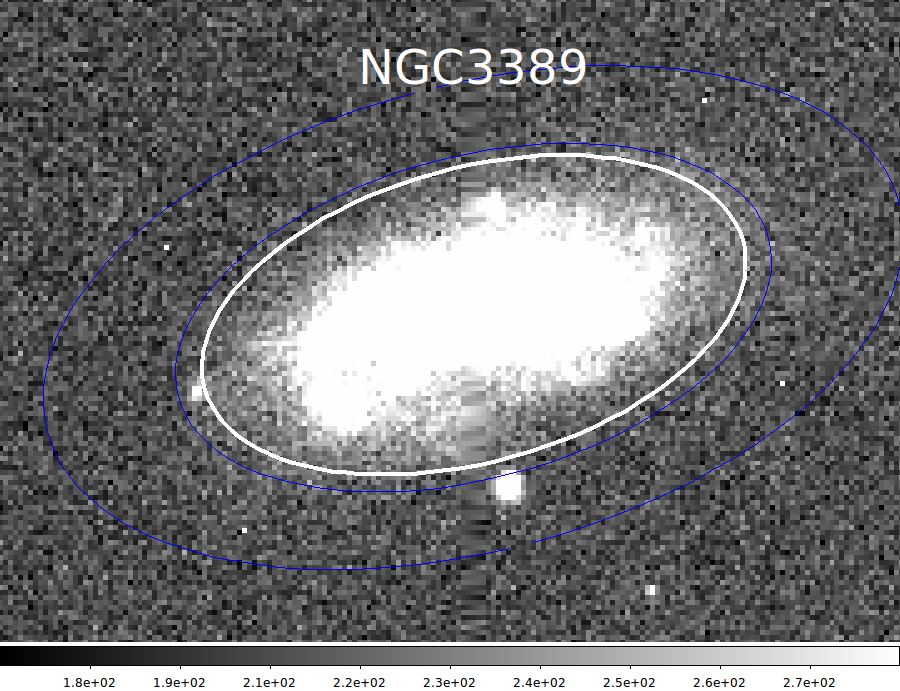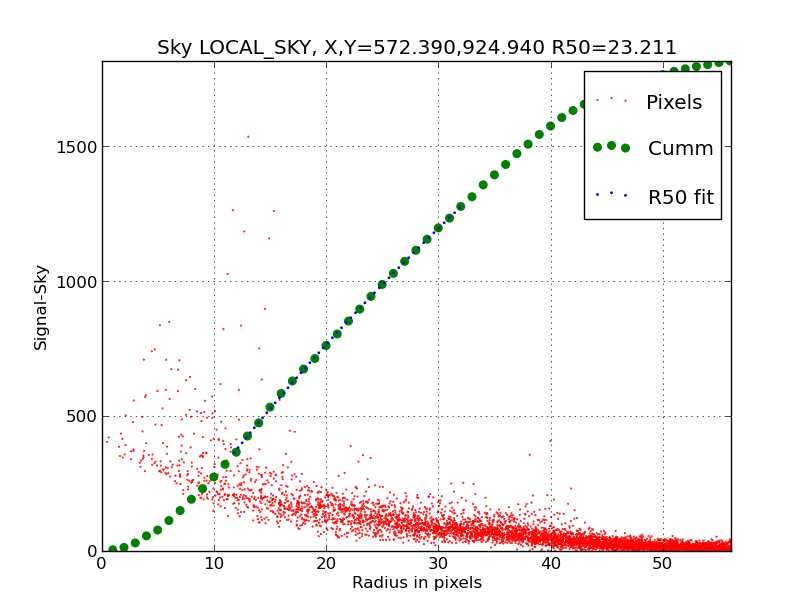This is a more easily interpretted radial brightness profile created with the
profile_plotter routine:
% cd ap_1
% profile_plotter
Usage: profile_plotter rad "log(I-Isky)" N
arg1 - Quantity to plot on X axis (can be q)
arg2 - Quantity to plot on Y axis (can be q)
arg3 - run in debug/verbose mode (Y/N)
% profile_plotter rad "log(I-Isky)" N
Enter rad [min,max,nbins,binwid] ( 0.8 14.0 12 1.2 ): 0 60 20 5
We can see that by plotting the Y-axis on a log scale we get
a roughly straight line as expected with a late-type disk galaxy
like NGC3389. Note that a lot of single pixels (the small blue points)
depart from this simple linear trend. These are likely associated with the
high spatial frequency features in the image. The red error bars indicaet the mean
errors in radial (elliptical) bins. These values are computed in the run
of profile_plotter and can be adjusted easily on each run.
|


